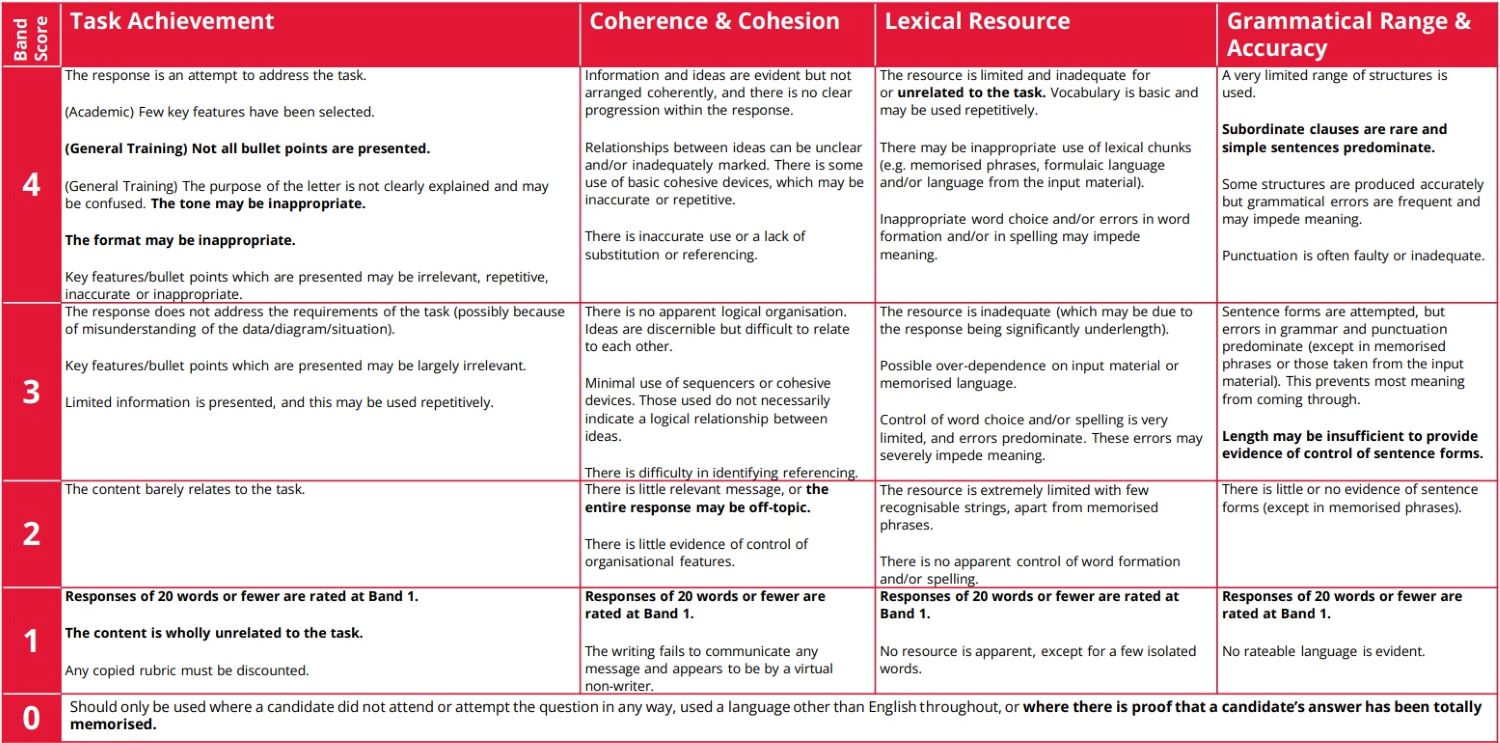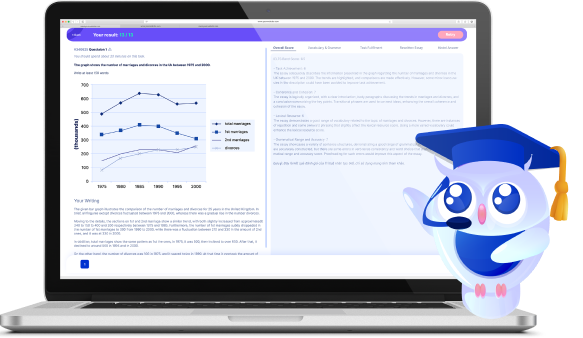Bài mẫu IELTS Writing Task 2 sẽ giúp bạn có cái nhìn tổng quát về những thông tin cần có trong một bài IELTS Writing. Hãy cùng Edmicro tìm hiểu những bài Writing IELTS mẫu Task 2 band 7.5 trở lên nhé.
Bài mẫu IELTS Writing Task 2
Hãy cùng Edmicro tham khảo 4 bài mẫu IELTS Writing Task 2 band 7.5+. Cùng với dàn ý và bộ từ vựng chi tiết.
IELTS Writing Task 2 bài mẫu số 1

| You should spend about 40 minutes on this task. Many people today, especially in the developed world, are choosing to have fewer children, or none at all. Why is this happening, and do you think it is a good trend? Give reasons for your answer, and include any relevant examples from your own knowledge or experience. You should write at least 250 words. |
Dàn ý
1. Introduction (Mở bài)
- Mention the increasing prevalence of opting for fewer or no children – Đề cập đến tỷ lệ tăng cao cho việc lựa chọn có ít con hoặc không có con.
- State the purpose of the essay: Claim the decision to have fewer children is a positive trend due to the rising cost of living and its impact on society.
Luận điểm: Cho rằng quyết định sinh ít con hơn là một xu hướng tích cực do chi phí sinh hoạt ngày càng tăng và tác động của nó đối với xã hội.
2. The rising cost of living as a driver for having fewer children – Áp lực tài chính là nguyên do khiến nhiều người lựa chọn sinh ít con hơn.
2.1: Financial strain on families – Áp lực tài chính
- Increase in the cost of raising a child – Chi phí nuôi dạy trẻ tăng cao.
- Growing demand for luxury goods driven by emotional attachments – Nhu cầu vật chất cao do sự gắn kết về mặt cảm xúc.
- Cost of education, meals, and healthcare – Chi phí giáo dục, ăn uống, chăm sóc sức khỏe.
2.2: Financial pressures as a reason for couples to limit family size – Áp lực tài chính khiến các cặp đôi giảm quy mô gia đình
3. Benefits of having fewer children for society – Lợi ích của việc có ít con lên xã hội
3.1: Addressing issues related to overpopulation – Vấn đề bùng nổ dân số
- Pressure on resources and the environment – Ảnh hưởng đến môi trường và tài nguyên.
- Direct correlation between population density and air pollution – Mối liên hệ trực tiếp giữa mật độ dân số và ô nhiễm không khí.
3.2: Mitigating global challenges – Thách thức toàn cầu
- Impact on deforestation and greenhouse gas emissions – Tác động đến nạn phá rừng và phát thải khí nhà kính.
- Environmental problems exacerbated by overpopulation – Các vấn đề môi trường nghiêm trọng do bùng nổ dân số.
4. Conclusion (Kết bài)
- Recap of the soaring cost of living as a key factor – Kết luận rằng chi phí sống tăng cao là nguyên do chính.
- Affirmation of the positive nature of having fewer children – Khẳng định tác động tích cực của việc có ít con hơn.
Bài mẫu
Many people today, particularly in developed nations, are opting to have fewer or no children at all. This phenomenon has become increasingly prevalent, and I consider it a positive trend. In the following essay, I will discuss the reasons behind this shift and argue why it benefits society.
The relentless rise in the cost of living is a significant driver behind the decision of many couples to limit the size of their families. Raising a child, in reality, has become substantially more expensive in recent years. Beyond the basic necessities of life, there is now a growing demand for luxury goods, often driven by emotional attachments to one’s children. For instance, parents sometimes feel compelled to purchase expensive gadgets for their children, even if it strains their finances. Additionally, providing children with a quality education, nutritious meals, and healthcare has become increasingly costly. These financial pressures are a compelling reason for couples to have fewer children.
I am in favor of this trend because it helps address critical issues related to population growth. To begin with, overpopulation places immense pressure on resources and the environment. For instance, studies have consistently shown a direct correlation between population density and increased levels of air pollution. This is largely due to the increased demand for more industries to sustain a growing population, leading to further deterioration of air and water quality. Furthermore, global challenges like deforestation and greenhouse gas emissions are exacerbated by overpopulation. Hence, embracing policies that promote having fewer children can help mitigate these environmental problems.
In conclusion, the soaring cost of living is a key factor driving the trend of having fewer children, and I view this change positively. It not only eases the financial burden on families but also contributes to addressing pressing environmental issues caused by overpopulation.
Từ vựng
| Từ vựng | Nghĩa |
| Limit the size of their families (v) | Hạn chế số thành viên trong gia đình |
| Emotional attachments (n) | Những sự gắn kết cảm xúc |
| Strain their finances (v) | Gây áp lực, gây căng thẳng cho tình hình tài chính của ai đó |
| Population growth (n) | Sự tăng trưởng dân số |
| Place immense pressure on (v) | Gây ra áp lực khổng lồ, áp lực mạnh mẽ cho một cá nhân, một nhóm hoặc một hệ thống |
| A direct correlation (n) | Mối tương quan trực tiếp |
| Sustain a growing population (v) | Duy trì sự gia tăng dân số |
| Deterioration of air and water quality (n) | Sự suy giảm chất lượng không khí và nước |
| Mitigate these environmental problems (v) | Giảm thiểu vấn đề ô nhiễm môi trường |
| The soaring cost of living (n) | Sự tăng vọt về chi phí sinh hoạt |
| Ease the financial burden (v) | Giảm bớt gánh nặng tài chính |
Bài Writing IELTS mẫu Task 2 số 2

| You should spend about 40 minutes on this task. Present a written argument or case to an educated reader with no specialist knowledge of the following topic. It is important for children to learn the difference between right and wrong at an early age. Punishment is necessary to help them learn this distinction. To what extent do you agree or disagree with this opinion? What sort of punishment should parents and teachers be allowed to use to teach good behaviour to children? Give reasons for your answer and include any relevant examples from your own knowledge or experience. Write at least 250 words. |
Dàn ý
1. Introduction (Mở bài)
- Background: Debate on how children learn right and wrong and the role of punishment – Bàn luận về chủ đề làm thế nào để trẻ em phân biệt được đúng sai và vai trò của việc sử dụng hình phạt.
- Thesis Statement: Disagreement with the necessity of punishment and belief in alternative approaches – Không đồng tình với quan điểm sử dụng hình phạt và tin rằng sẽ có những phương pháp thay thế khác.
2. Importance of Ethical and Moral Development (Tầm quan trọng của phát triển đạo đức)
- Crucial aspect of a child’s upbringing – Một phần quan trọng trong quá trình nuôi dạy trẻ.
- Foundation for responsible and conscientious individuals – Nền tảng cho những cá nhân tận tâm và có trách nhiệm.
3. Limitations of Punishment as a Primary Teaching Method (Hạn chế khi sử dụng hình phạt làm phương pháp giáo dục chính)
- Focuses on negative consequences and can lead to fear and resentment – Tập trung vào những hệ quả xấu, có thể dẫn tới sợ hãi hoặc oán giận ở trẻ.
- Lacks genuine understanding and promotes compliance out of fear – Thiếu đi sự thấu hiểu thật sự, thay vào đó là sự tuân thủ do sợ hãi.
- Hinders empathy and critical thinking essential for ethical decision-making – Cản trở việc phát triển sự đồng cảm và suy nghĩ cần có để đưa ra quyết định đạo đức.
4. Alternative Approaches for Teaching Good Behavior
- Emphasizing positive reinforcement, guidance, and open communication – Tập trung vào những sự củng cố tích cực, sự dẫn dắt và giao tiếp cởi mở.
- Positive reinforcement to motivate and reward good behavior – Củng cố tích cực để thúc đẩy và thưởng cho những hành vi tốt.
- Guidance to explain rules and values and understand moral implications – Dẫn dắt, giảng giải các quy luật, giá trị, giúp trẻ hiểu các giá trị đạo đức.
- Open communication to foster understanding through meaningful dialogues – Giao tiếp mở để nuôi dưỡng sự thấu hiểu qua các cuộc trò chuyện, đối thoại ý nghĩa.
- Non-violent consequences such as time-outs, withdrawal of privileges, and constructive discussions – Sử dụng những hình thức không bạo lực, ví dụ như cấm túc, bỏ đặc quyền, hoặc các buổi thảo luận có tính xây dựng.
5. Conclusion
- Disagreement with the necessity of punishment in teaching right and wrong – Không đồng tình với việc sử dụng bạo lực để dạy trẻ về đúng – sai.
- Advocacy for positive reinforcement, guidance, and non-violent consequences with open communication – Vận động cho những sự thay đổi tích cực, dẫn dắt, và sử dụng hình thức dạy dỗ không bạo lực cùng giao tiếp đúng cách.
Bài mẫu
The question of how children should learn the difference between right and wrong, and whether punishment is a necessary component of this process, is a topic of debate. I do not agree with the opinion that punishment is essential, and believe that parents and teachers can employ alternative approaches to teach good behavior to children.
To begin, it is essential for children to learn the distinction between right and wrong at an early age. Ethical and moral development is a crucial aspect of a child’s upbringing, laying the foundation for responsible and conscientious individuals. However, I contend that the role of punishment in this process is limited and should not be a primary method of teaching because it tends to focus on negative consequences, such as pain or suffering, which can lead to fear and resentment in children. Rather than fostering a genuine understanding of the reasons behind good behavior, punishment often results in children complying out of fear, rather than a sense of morality. It can hinder the development of empathy and critical thinking, which are essential for ethical decision-making.
Parents and teachers should prioritize alternative methods that emphasize positive reinforcement, guidance, and open communication. Positive reinforcement involves rewarding and praising good behavior, which motivates children to continue making ethical choices. Guidance means explaining the reasons behind rules and values, helping children understand the moral implications of their actions. Open communication encourages children to express their thoughts and feelings, fostering a deeper understanding of right and wrong through meaningful dialogues. While discipline remains essential, parents and teachers should use non-violent consequences such as time-outs, withdrawal of privileges, or constructive discussions. These methods teach children the consequences of their actions without causing physical or emotional harm. They encourage reflection, responsibility, and the opportunity to make amends.
In conclusion, I do not agree with the view that punishment is necessary to teach children the difference between right and wrong. Instead, positive reinforcement, guidance, and non-violent consequences, coupled with open communication, are more effective approaches to instilling good behavior and ethical values in children.
Từ vựng
| Từ vựng | Nghĩa |
| Employ alternative approaches (v) | Vận dụng các phương pháp thay thế |
| Distinction (n) | Sự phân biệt |
| Ethical and moral development | Phát triển đạo đức và đạo lý |
| Lay the foundation for sth | Đặt nền móng cho |
| Conscientious (adj) | Tận tâm |
| Resentment (n) | Sự oán giận |
| Foster a genuine understanding | Thúc đẩy sự hiểu biết chân thật |
| A sense of morality (n) | Ý thức đạo đức |
| Hinder the development of empathy | Cản trở sự phát triển của việc đồng cảm |
| Ethical decision-making (n) | Quyết định đạo đức |
| Positive reinforcement (n) | Sự củng cố tích cực |
| Open communication (n) | Giao tiếp mở |
| Moral implications (n) | Hệ quả đạo đức |
| Time-outs (n) | Thời gian nghỉ |
| Withdrawal of privileges (n) | Thu hồi đặc quyền |
| Constructive discussions (n) | Cuộc thảo luận xây dựng |
| Make amends (n) | Bù đắp |
Bài mẫu IELTS Writing Task 2 số 3

| You should spend about 40 minutes on this task. Write about the following topic. Meat production requires relatively more land than crop production. Some people think that as land is becoming scarce, the world’s meat consumption should be reduced. What measures could be taken to reduce the world’s meat consumption? What kinds of problems might such measures cause? Give reasons for your answer and include any relevant examples from your own knowledge or experience. You should write at least 250 words. |
Dàn ý
1. Introduction
- Background: Increasing world population and land scarcity – Chủ đề chính của bài là gia tăng dân số và khan hiếm đất đai.
- Thesis: Exploring measures to reduce global meat consumption and associated challenges – Luận điểm chính là tìm giải pháp để giảm thiểu tiêu thụ thịt và những thách thức đi kèm.
2. Strategies to Reduce Meat Consumption (Chiến lược giảm tiêu thụ thịt)
2.1: Promote vegetarian and vegan diets (Thúc đẩy chế độ ăn chay và ăn thuần chay)
- Launch educational campaigns – Đưa ra các chiến dịch giáo dục.
- Raise awareness about personal health and environmental benefits – Nâng cao nhận thức về sức khỏe và bảo vệ môi trường.
- Provide information on nutritious alternatives and recipes – Đưa thêm thông tin về các chế độ dinh dưỡng thay thế.
2.2: Implement meat taxes (Áp thuế với thịt)
- Discourage excessive meat consumption – làm giảm thiểu tiêu thụ thịt quá đà.
- Generate revenue for sustainable agriculture – tạo thu nhập cho ngành nông nghiệp bền vững.
- Successful examples from other taxed products – Ví dụ từ các mặt hàng áp thuế khác, ví dụ như thuốc lá, rượu…
3. Challenges in Implementation (Thách thức khi áp dụng các giải pháp trên)
3.1: Resistance from the meat industry and job market impact (Sự phản đối từ ngành công nghiệp sản xuất thịt và tác động lên thị trường)
- Concerns about job losses – lo ngại về thất nghiệp
- Re-training and transitioning strategies – cần chiến lược đào tạo lại và chuyển tiếp
3.2: Cultural and dietary preferences as barriers (Rào cản từ văn hóa và chế độ ăn uống)
- Respect for culinary traditions – Cần tôn trọng những nền ẩm thực truyền thống.
- Culturally sensitive and tailored approaches – Cần có phương pháp tiếp cận phù hợp và đảm bảo về mặt văn hóa.
4. Conclusion (Kết bài)
- Urgency to reduce meat consumption for land scarcity mitigation – Tình trạng cấp bách yêu cầu giảm tiêu thụ thịt do khan hiếm đất đai.
- Viable approaches: promoting vegetarian and vegan diets, implementing meat taxes – Một vài phương án khả thi: Thúc đẩy chế độ ăn chay và thuần chay, áp thuế với thịt.
- Addressing challenges: job market impact and cultural dietary preferences – Những thách thức đi kèm: Ảnh hưởng đến thị trường việc làm và vấn đề văn hóa ẩm thực.
Bài mẫu
In recent years, as the world’s population continues to increase, some argue that reducing meat consumption is essential to mitigate land scarcity. This essay explores measures to reduce global meat consumption and potential challenges associated with these actions.
One of the primary strategies to lower meat consumption is to promote vegetarian and vegan diets. Governments and organizations can launch educational campaigns to raise awareness about the benefits of plant-based diets for both personal health and the environment. These initiatives can include providing information on nutritious vegetarian alternatives, recipes, and the environmental advantages of reducing meat consumption. Another effective measure is the implementation of meat taxes. By imposing taxes on meat products, governments can discourage excessive meat consumption and generate revenue to support more sustainable agricultural practices. This approach has proven successful in reducing the consumption of other products like tobacco and sugary beverages. The revenue generated from meat taxes could be reinvested into research and development of plant-based protein alternatives or eco-friendly agricultural practices.
However, implementing these measures may not be without challenges. One major concern is resistance from the meat industry and its impact on the job market. The meat production sector is a significant source of employment in many countries. A reduction in meat consumption could lead to job losses, particularly in regions heavily dependent on this industry. Policymakers must consider strategies for retraining and transitioning workers to new sectors as part of a comprehensive plan. Moreover, cultural and dietary preferences may pose barriers to adopting plant-based diets. Different societies have distinct culinary traditions, and some individuals may be reluctant to give up meat-based dishes. Strategies to promote alternative diets should be culturally sensitive and tailored to accommodate various preferences.
In conclusion, as land scarcity becomes an increasingly pressing global concern, measures to reduce meat consumption are imperative. Promoting vegetarian and vegan diets, imposing meat taxes are all viable approaches. However, it is essential to address potential challenges such as job losses in the meat industry and cultural dietary preferences when implementing these measures.
Từ vựng
| Từ vựng | Nghĩa |
| Mitigate land scarcity | Giảm thiểu sự khan hiếm đất đai |
| Lower meat consumption (v) | Giảm lượng tiêu thụ thịt |
| Promote vegetarian and vegan diets (v) | Khuyến khích chế độ ăn chay |
| Launch educational campaigns (v) | Triển khai các chiến dịch giáo dục |
| Raise awareness about sth (v) | Tăng cường nhận thức |
| Plant-based diets (n) | Chế độ ăn thực vật |
| Nutritious vegetarian alternatives (n) | Các lựa chọn thực đơn chay giàu dinh dưỡng |
| Implementation of meat taxes (n) | Thực hiện thuế đối với sản phẩm thịt |
| Impose taxes on (v) | Áp đặt thuế lên |
| Excessive meat consumption (n) | Tiêu thụ thịt quá mức |
| Generate revenue (v) | Tạo ra thu nhập |
| Sustainable agricultural practices (n) | Các phương pháp nông nghiệp bền vững |
| Reinvest into sth (v) | Tái đầu tư |
| Plant-based protein alternatives (n) | Các lựa chọn thay thế protein từ thực vật |
| Eco-friendly agricultural practices (n) | Các phương pháp nông nghiệp thân thiện với môi trường |
| Resistance from the meat industry (n) | Sự phản đối từ ngành công nghiệp thịt |
| Job losses (n) | Mất việc làm |
| Pose barriers to (v) | Tạo ra rào cản cho |
| Reluctant (adj) | Miễn cưỡng |
| Culturally sensitive (adj) | Nhạy cảm với văn hóa |
| Viable approaches (n) | Các phương pháp khả thi |
Xem thêm: Bài Mẫu IELTS Writing Task 2 Band 6 Theo Chủ Đề Mới Nhất
Đề mẫu IELTS Writing Task 2 số 4

| You should spend about 40 minutes on this task. Write about the following topic: Some university students want to learn about other subjects in addition to their main subjects. Others believe it is more important to give all their time and attention to studying for a qualification. Discuss both these views and give your own opinion. Give reasons for your answer and include any relevant examples from your own knowledge or experience. Write at least 250 words. |
Dàn ý
1. Introduction (Mở bài)
- Debate in the university setting: focus on major vs. diversify learning – Tranh luận trong bối cảnh Đại học: Nên tập trung học 1 môn hay học nhiều môn?
- Thesis statement: Broad and interdisciplinary education is essential for effective preparation for the future. – Luận điểm: Giáo dục liên ngành là cần thiết để chuẩn bị cho tương lai.
2. Supporters of concentrating on one’s major
- Emphasize the importance of specialization – Nhấn mạnh tầm quan trọng của chuyên môn.
- Distractions in university life can hinder academic progress – Học nhiều môn khác nhau có thể làm giảm hiệu suất học tập.
- Dedication to specialized knowledge and skills for career opportunities – Có chuyên môn giỏi trong một ngành nghề nhất định sẽ mở ra cơ hội nghề nghiệp.
Example: Chemical engineering student excelling in coursework for better job prospects
3. Importance of a well-rounded and interdisciplinary approach
- Graduates often change or diversify careers – Sinh viên tốt nghiệp thường thay đổi hoặc đa dạng hóa ngành nghề của bản thân.
- Drawing knowledge from various disciplines fosters creativity and innovation – Bổ sung kiến thức từ nhiều lĩnh vực khác nhau thúc đẩy sự sáng tạo và đổi mới.
Example: Engineer applying figure drawing skills creatively to work
(Ví dụ: Kỹ sư áp dụng kỹ năng vẽ hình mẫu sáng tạo vào công việc)
- Additional subjects contribute to personal growth and broader perspective – Học thêm các môn khác giúp phát triển bản thân và mở rộng tầm nhìn.
4. Conclusion
- Focusing on one’s major develops a well-developed skill set – Tập trung học một chuyên ngành giúp phát triển kỹ càng một nhóm kỹ năng nhất định.
- Diverse knowledge and skills provide a stronger foundation – Kiến thức và kỹ năng mở rộng sẽ xây dựng nền tảng vững hơn.
- Potential for a more creative and fulfilling career and personal growth – Tiềm năng cho sự nghiệp trọn vẹn và sáng tạo hơn, cũng như giúp phát triển cá nhân.
Bài mẫu
In today’s university setting, there is a debate about whether students should focus solely on their major subjects or if they should diversify their learning by exploring unrelated subjects. In my opinion, it is essential for university students to have a broad and interdisciplinary education to prepare them for the future effectively.
Supporters of concentrating on one’s major emphasize the importance of specialization. They argue that the distractions that come with university life, such as social activities and independent living, can hinder academic progress. To excel in their chosen field and secure promising career opportunities, students must dedicate significant time and effort to mastering the specialized knowledge and skills required. For instance, a chemical engineering student who immerses themselves in their coursework is more likely to become a strong candidate for well-paying positions within their field.
On the contrary, I believe that a well-rounded and interdisciplinary approach to learning is more valuable in the long run. Many graduates end up changing or diversifying their careers after graduation. Even if they remain in the same industry, the ability to draw knowledge from various disciplines can foster creativity and innovation. For instance, an engineer who explores figure drawing or other unrelated subjects may find ways to apply this newfound knowledge creatively to their work. Even if these additional subjects are not directly related to their career, they can contribute to personal growth and a broader perspective.
In conclusion, while focusing on one’s major can lead to a well-developed skill set, having a diverse range of knowledge and skills provides a stronger foundation for a potentially more creative and fulfilling career, as well as personal growth.
Từ vựng
| Từ vựng | Nghĩa |
| Focus solely on (v) | Tập trung duy nhất vào |
| Diversify one’s learning (v) | Đa dạng hóa việc học |
| Interdisciplinary education (n) | Giáo dục đa ngành |
| Specialization (n) | Chuyên môn hóa |
| Hinder academic progress (v) | Cản trở tiến bộ học thuật |
| Secure promising career opportunities (v) | Có cơ hội nghề nghiệp đầy hứa hẹn |
| Immerse yourselves in sth (v) | Đắm chìm vào cái gì đó |
| Well-rounded (adj) | Toàn diện |
| Foster creativity and innovation (v) | Tạo điều kiện cho sáng tạo và đổi mới |
| A broader perspective (n) | Cái nhìn rộng hơn |
| A well-developed skill set (n) | Bộ kỹ năng phát triển tốt |
| Provides a stronger foundation for sth (v) | Cung cấp nền tảng mạnh hơn |
| Fulfilling career (n) | Sự nghiệp đáng tự hào |
Hướng dẫn sử dụng bài mẫu IELTS Writing Task 2
Vậy làm thế nào để có thể tận dụng các bài mẫu IELTS Writing Task 2 trong quá trình ôn luyện của bạn? Thí sinh có thể tham khảo một số cách sau:
- Học từ vựng: Các bài mẫu Writing mà Edmicro cung cấp đều làm rõ các từ, cụm từ nổi bật. Từ các bài này, bạn có thể bổ sung vốn từ vựng để trình bày luận điểm trôi chảy, mạch lạc hơn.
- Bổ sung thêm các luận ý, luận điểm cho các chủ đề thường gặp: Ngoài ra, bạn có thể tham khảo từ dàn ý và bài mẫu hoàn chỉnh để học cách lên luận điểm. Thí sinh cũng nên ghi nhớ những ý tưởng hay để vận dụng vào bài viết của mình.
- Học cách triển khai ý: Ngoài học cách bổ sung luận ý, luận điểm, bạn cũng có thể triển khai ý tốt hơn từ các bài mẫu IELTS Writing Task 2. Hãy lưu ý cách mà các sample này sử dụng từ nối và liên từ để kết nối giữa các ý, các đoạn.
Ngoài ra, sau khi học từ những bài mẫu IELTS Writing Task 2, bạn cũng nên luyện viết theo chính các đề mẫu đó. Nên lưu ý viết trong 40 phút theo đúng thời gian thật và học theo cách triển khai, những luận điểm, từ vựng của bài mẫu.
Xem thêm: Từ Vựng IELTS Writing Task 2 – Tổng Hợp 10 Chủ Đề Hay Nhất
Tổng quan IELTS Writing Task 2
Để sử dụng các bài mẫu IELTS Writing Task 2 hiệu quả, bạn nên nắm vững các thông tin tổng quan về phần thi này và các bước viết bài:
IELTS Writing Task 2 là gì?
- IELTS Writing Task 2 nằm ở phần 2 của bài thi Writing, chiếm ⅔ tổng số điểm.
- Phần thi này kéo dài 40 phút và yêu cầu bạn viết ít nhất 250 từ.
- Văn phong của IELTS Writing Task 2 yêu cầu tính học thuật và trang trọng.
- Đề bài xoay quanh các chủ đề xã hội nổi trội, ví dụ như Y tế, Giáo dục…
IELTS Writing Task 2 Band Descriptors
Một bài IELTS Writing Task 2 được chấm dựa trên 4 tiêu chí:
- Task Achievement (TA): Khả năng hoàn thành yêu cầu của bài
- Coherence and Cohesion (CC): Độ trôi chảy và mạch lạc
- Lexical Resources (LR): Vốn từ vựng
- Grammatical Range and Accuracy (GRA): Sử dụng ngữ pháp đúng và đa dạng


Cụ thể, một bài IELTS Writing Task 2 band 7.5 sẽ đáp ứng các tiêu chí như sau:
Tiêu chí 1: Task Achievement
- Trả lời đủ và đúng các yêu cầu của đề bài
- Trình bày tốt các chi tiết quan trọng
- Một số ý có thể phát triển tốt hơn
- Sử dụng ngữ pháp phù hợp, có cơ sở và làm tăng giá trị luận điểm
Tiêu chí 2: Coherence and Cohesion
- Nội dung và thông tin được bố cục rõ ràng, mạch lạc
- Chia đoạn tốt, chuyển ý giữa các đoạn liền mạch, logic
- Còn sử dụng quá nhiều từ nối, liên từ, hoặc sử dụng chưa phù hợp với ngữ cảnh
Tiêu chí 3: Lexical Resources
- Vốn từ đa dạng, chính xác
- Có thể sử dụng thành thạo từ vựng cơ bản
- Dùng từ ngữ học thuật tương đối chính xác
- Đôi chỗ còn sử dụng từ chưa phù hợp ngữ cảnh hoặc sai chính tả
Tiêu chí 4: Grammatical Range and Accuracy
- Sử dụng kết hợp được nhiều cấu trúc ngữ pháp phức tạp
- Hầu hết không mắc lỗi sai
Các bước viết bài IELTS Writing Task 2
Để viết một bài IELTS Writing Task 2 hoàn chỉnh, thí sinh cần thực hiện các bước sau:
Bước 1: Phân tích đề
Bước đầu tiên và quan trọng nhất là phân tích đề bài để hiểu rõ yêu cầu của đề. Thí sinh cần xác định được chủ đề của bài, yêu cầu của đề là gì (two-part question, agree or disagree…)
Ngoài ra, thí sinh cũng cần chú ý đến các từ khóa trong đề bài để có thể triển khai bài viết một cách phù hợp:
- Keyword: Từ khóa chính để xác định chủ đề tổng thể của bài.
- Micro-keywords: Các từ khóa phụ.
- Instruction word: Các từ hướng dẫn.
Ví dụ, nếu trong đề có cụm “agree or disagree”, bạn sẽ xác định được đây là dạng bài Argumentative (Tranh luận).
Bước 2: Lên dàn ý (Outline)
Sau khi phân tích đề bài, thí sinh cần lên dàn ý để có thể định hướng cho bài viết. Dàn ý cần bao gồm các ý chính và ý phụ cần triển khai trong bài. Bạn cần xây dựng dàn ý như sau:
- Introduction (Mở bài): Bạn cần xác định được background (nội dung chính) và thesis statement (luận điểm) của bài viết.
- Body (Thân bài): Với mỗi ý, thí sinh cần viết được tối thiểu 2 – 3 luận điểm.
- Conclusion (Kết bài): Tóm tắt lại các ý chính đã triển khai trong bài. Có thể đưa ra đề xuất hoặc dự đoán dựa trên thông tin vừa phân tích trong bài.
Bước 3: Viết mở bài (Introduction)
Mở bài là phần quan trọng để gây ấn tượng với người đọc và thu hút sự chú ý của họ. Thông thường, phần Introduction của IELTS Writing Task 2 sẽ bao gồm 2 phần:
- Background sentence: Giới thiệu nội dung và chủ đề chính của bài. Bạn có thể viết câu mở này bằng cách paraphrase lại đề bài.
- Thesis statement: Câu đưa ra luận điểm chính của bài viết.
Bước 4: Viết thân bài (Body)
Phần thân bài (Body) thường gồm 2 đoạn để nêu lên các luận điểm chính và chứng minh nó. Thí sinh sẽ cần triển khai luận điểm trong thân bài như sau:
- Topic Sentence: Câu mở đoạn
- Explanation: Giải thích vấn đề
- Example: Ví dụ
Bước 5: Viết kết bài (Conclusion)
Bạn có thể sử dụng các cụm như: In conclusion, In summary, To sum up…để tổng kết lại các ý chính được triển khai trong bài. Bạn cũng có thể đưa thêm đề xuất hoặc dự đoán, ngoài ra, không được đưa thêm thông tin, luận điểm mới.
Bài mẫu IELTS Writing Task 2 sẽ là một nguồn ôn luyện hiệu quả trong quá trình học IELTS Writing của bạn. Nếu còn gì thắc mắc, đừng ngại liên hệ Edmicro nhé!
Xem thêm:











